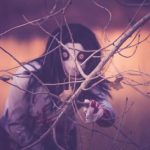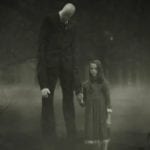 Creepy
Creepy  Creepy
Creepy  Technology
Technology 10 Scientific Breakthroughs of 2025 That’ll Change Everything
 Our World
Our World 10 Ways Icelandic Culture Makes Other Countries Look Boring
 Misconceptions
Misconceptions 10 Common Misconceptions About the Victorian Era
 Mysteries
Mysteries 10 Strange Unexplained Mysteries of 2025
 Miscellaneous
Miscellaneous 10 of History’s Most Bell-Ringing Finishing Moves
 History
History 10 Great Escapes That Ended Right Back in Captivity
 Weird Stuff
Weird Stuff 10 Fascinating Things You Might Not Know About Spiders
 Food
Food 10 Everyday Foods You Didn’t Know Were Invented by the U.S. Military
 History
History 10 Odd Things Colonial Americans Kept at Home
 Creepy
Creepy 10 More Representations of Death from Myth, Legend, and Folktale
 Technology
Technology 10 Scientific Breakthroughs of 2025 That’ll Change Everything
 Our World
Our World 10 Ways Icelandic Culture Makes Other Countries Look Boring
Who's Behind Listverse?

Jamie Frater
Head Editor
Jamie founded Listverse due to an insatiable desire to share fascinating, obscure, and bizarre facts. He has been a guest speaker on numerous national radio and television stations and is a five time published author.
More About Us Misconceptions
Misconceptions 10 Common Misconceptions About the Victorian Era
 Mysteries
Mysteries 10 Strange Unexplained Mysteries of 2025
 Miscellaneous
Miscellaneous 10 of History’s Most Bell-Ringing Finishing Moves
 History
History 10 Great Escapes That Ended Right Back in Captivity
 Weird Stuff
Weird Stuff 10 Fascinating Things You Might Not Know About Spiders
 Food
Food 10 Everyday Foods You Didn’t Know Were Invented by the U.S. Military
 History
History 10 Odd Things Colonial Americans Kept at Home
10 Lesser-Known Shapeshifter Legends from Around the World
Ancient folklore from almost every world culture includes some version of a supernatural being who can transform from one form to another, known as a “shapeshifter.” One of the best examples is the legend of the werewolf. People from all ends of the earth are familiar with this dangerous, mythical beast that transforms from man to wolf by the light of a full moon.
Another well-known example is the Skinwalker, who comes from the lore of Native American tribes in the American Southwest. This version of the shapeshifter legend was born when a benevolent medicine man abused his Indigenous magic for evil and received the power to transform into an animal.
While all variations of this age-old legend are not as prominent as these two, they are equally captivating. Keep reading for 10 shapeshifter legends from around the world that most people haven’t heard of.
Related: 10 Urban Legends with Origins in True Crime
10 Sinister Sea Otters
The legend of the “Kushtaka,” or “Kooshdakhaa,” comes from the Indigenous Tlingit and Tsimshian tribes located in northwestern Canada and southeastern Alaska. The deceptively cute cryptids appear as playful sea otters at sea but morph into men when they step foot on land. They often disguise themselves as “kinsmen,” so their victims won’t realize their true nature until it’s too late.
In certain instances, Kushtaka take the form of a friend or relative of anyone lost or injured in Alaska’s wilderness. Feigning good intentions, they lead the victims deeper into the wild, where they will tear them to pieces or, worse, make them into another Kushtaka, thereby trapping their souls and preventing them from reincarnating.
Groups of Kushtaka are considered particularly dangerous. They lure their victims toward them by screaming and making noises that sound like women or children in distress. Once they see you approaching, there is no escape. Lore names one safeguard against them, and that is man’s best friend. Kushtaka are deathly afraid of dogs. Luckily, many villages have sled dogs to protect them from harm. Fire is also said to keep them at bay.[1]
9 Unnatural Wildlife
The “Nagual,” or “Nahual,” is a shapeshifter legend from Indigenous cultures in Mesoamerica, which includes parts of Mexico and Central America. The term refers to someone who can transform into an animal—often a cougar, jaguar, or wolf. The creature’s background and traits vary by region, with some saying they are powerful sorcerers who transformed themselves to do evil. Others believe they are personal guardian spirits—those in between claim the individual’s personality determines the Nagual’s behavior.
Mesoamerican culture has long believed that every person has an animal counterpart, or spirit animal, tied to their life force, leading many to consider tonalism as the legend’s origin. People’s connections with their spirit animal vary greatly, with some sharing characteristics or talents with their animal, others who can control their animal’s abilities at will, and then those who can alter their whole shape to become their spirit animal. The latter are considered “true Naguals.”[2]
8 Wicked Hyenas
Stories of the “Werehyena” are common in folklore from the Arabian Peninsula, the Levant, North Africa, the Horn of Africa, the Near East, and adjacent territories. The mystical beasts can transform between a human and hyena form, whether as a hybrid of both or one or the other. In addition to shapeshifting abilities, they can control other hyenas and possess humans. Werehyenas are typically associated with witchcraft and sorcery and are considered a harbinger of bad luck and misfortune.
Each location adds its own attribute to the legendary creature. For example, in Somalia, the Werehyena must rub itself with a magical stick at sundown to transform. In Sudanese folklore, the creature is known for attacking lovers after dark. Morocco’s Werehyenas transform every night after sunset and return to human form at dawn.
Some believe the legend’s origins are a result of the long-time adversarial relationship between hyenas and humans that dates back to the earliest human presence in Africa: “For millennia, the nocturnal creatures have been known to converge in cackles at night, breaking into village huts, killing children, and ravaging livestock.”[3]
7 Supernatural Seals
“Selkies” are mythological beings from Irish, Scottish, Faroese, and Icelandic folklore. The affectionate and good-natured sea creatures undergo a full-bodied transformation when they come on land, shedding their skin to become a human for a short period. The legend claims that they must wait at least seven years to come back ashore once they return to their seal skin.
Selkies are typically portrayed as handsome men or beautiful women who play the role of predator or prey equally well. Some are said to come to shore solely for the pleasure of being human, but most legends of Selkies bear themes of a romantic tragedy. For example, many myths feature the male Selkie as a predator who seeks out lonely fisherman wives. Meanwhile, female Selkies will typically see their seal skin stolen, forcing them under the control of a human—often depicted as a forced marriage.
Experts trace the legend’s origins to a time when early Scottish settlers and shipwrecked Spaniards married dark-haired, fur-wearing Finnish and native Saami women.[4]
6 Mischievous Felines
The “Bakeneko” is a mythical creature from humble beginnings in Japanese folklore. Legends say Bakeneko, defined best as “Changing Cat,” started as an average house cat but changed as they got older. First, they started walking on their hind legs, growing to the size of a human, and gained powers—including the ability to change form and speak human languages.
In their human form, they appear as beautiful women with cat-like features. However, a Bakeneko’s favorite form to take is their owners or other familiar humans. They also possess the power to summon fireballs, use their tails as torches to set fires, control the dead, and curse (or kill) their previous owners.
Japanese lore also mentions the “Nekomata,” described as a Bakeneko’s powered-up evil cousin. Despite similar beginnings, the Nekomata are older and larger than the Bakeneko. After they change, Nekomata has two identical tails, which allows them to cause double the trouble. Scholars say the legends likely stemmed from seeing cats on their hind legs licking fish oil from lamps with “shining, anticipatory eyes.”[5]
5 Blood-Sucking Babies
Philippine mythology tells of a vampiric shapeshifter called a “Tiyanak” that takes the form of a newborn baby or toddler. The creature uses its innocent appearance to lure unsuspecting passersby into the jungle, only transforming into its proper form once its victim picks it up. Tiyanaks typically appear with sharp claws, fangs, wrinkled skin, large noses, wide mouths, and fiercely bulging eyes that glow red.
They have piercing, sharp voices and a “soul-crushing cry” but are known best for their deceptive behavior. As the story goes, the demon child is nearby if their cries sound faint. But if the cry sounds loud, it is farther away. The word Tiyanak is derived from the words “mati” and “anak,” which translates to “dead child.”
A Mindanao legend suggests that Tiyanaks are the souls of children whose mothers died while giving birth, so they were left alone to become frightening demonic creatures. Other versions describe them as the souls of infants who died before being baptized. Lore names two ways to repel them: turning your clothes inside out or scaring them away with loud noises.[6]
4 Defender Sharks
Sharks are one of the most sacred and revered creatures in Hawaiian culture, securing a spot in their mythology back to the first man on Earth (said to have come from a union between a human woman and a shark God). The legend of the “Aumakua” tells of shark shapeshifters who are said to be ancestors reincarnated as animals and sent to protect family members. Only one species can hold the title: the tiger shark.
One well-known legend featured a shark queen and guardian named Ka’ahupahau, who was responsible for protecting all men who entered the waters of Pu’uloa. One day, when a group of man-eating sharks entered the lochs of Pu’uloa, Ka’apahau transformed into a strong net to block the harbor entrance and keep the evil sharks from escaping. Her older brother, Kahi’uka, struck and beat them with his tail, so they landed out of the water and died.
Another legend told the story of Kanekua’ana, a shark guardian who provided the people of ‘Ewa with food during times of famine. The descendants of Kanekua’ana erected temples and offered sacrifices to receive her blessings- which typically consisted of oysters, shrimp, and anchovies.[7]
3 Undead Owls
Indigenous Seminole folklore describes a grotesque “man-owl” hybrid called the “Stikini” that roams the forests of Oklahoma and swampy regions of New Jersey and Michigan. The Stikini appears as an ordinary human by day. At night, it morphs into an owl-like monstrosity that targets the most vulnerable prey—sleeping humans and children. The Stikini were originally believed to be evil witches who can transform into giant owl-like monsters. Hearing their cry is considered an omen of impending death.
Some legends claim Stikini are technically dead and have to constantly reanimate themselves by consuming human hearts, requiring one per night to stay alive. To start the transformation process, the Stikini vomits up its internal organs and hangs them in a tree or hides them to keep them safe. It becomes a great horned owl and flies to find a fresh victim.
When it finds one, the Stikini removes the (still-beating) heart from the human’s mouth and takes it back to its home, where it cooks the heart in an enchanted pot and eats it in secret. Then, before dawn, the Stikini returns to its organs, swallows them, and is turned back into a human. If the organs have been found and stolen, or if the Stikini is shot with a specially chosen and decorated arrow before it can consume them, it will die at sunrise.[8]
2 Seductive Dolphins
The South American version of the shapeshifter is known as “Encantado.” With roots in the traditional beliefs of inhabitants of the Amazon rainforest, the Encantado, Brazilian Portuguese for “enchanted one,” can transform from a pink river dolphin into a human. One legend claims the Encantado transforms into a “tall, handsome, and elegantly dressed man” who ventures ashore at night to seduce the wives and daughters of Amazonian villages. After impregnating the woman, he disappears into the river by sunrise.
Another legend says the Encantado “will take lone swimmers… to the mystical underwater world of Encante, from which they can never return.” On the positive side, Encante is described as an Atlantis-like paradise, better than the natural world in every way. Some also consider the Encantado as a guardian for the vulnerable population of Amazonian manatees.
The pink river dolphin is most likely featured in the legend because they are considered sacred creatures. Killing one is thought to bring bad luck. Local fishermen believe even making direct eye contact with a river dolphin will unleash a lifetime of nightmares, “forever damning you to terrible dreams and nights of frightful dolphin-induced visions.”[9]
1 Vile Insects
The “Adze” is a shapeshifter that has been terrifying the Ewe people of West Africa for centuries. Taking the form of insects like flies, beetles, fireflies, mosquitos, and even balls of light, the Adze slips through keyholes, under windows, and around doors to prey on sleeping men, women, and children. They can shift from insects into quasi-humans—appearing as hunchbacked creatures with talons and jet-black skin.
Sometimes called the “Firefly Vampire of Africa,” the Adze evolved from a witch who harnessed dark powers through rituals and pacts with evil forces. The transformation granted the witch eternal life but “condemned it to an insatiable appetite for blood.” Adzes can drain a person of their life, possess them, or consign them to madness or misery.
No potion, spell, or weapon can fight them off, and there is no cure for their victims once bitten. But it’s possible to free someone from their possession. One method is to force the Adze out of its host and kill it in its quasi-human form. Another technique is to hold “deliverance sessions,” which include intensive prayer sessions and exorcisms. The legend’s origins likely served as an explanation and warning against malaria and other insect-borne diseases that the Ewe people faced around the 13th century.[10]








